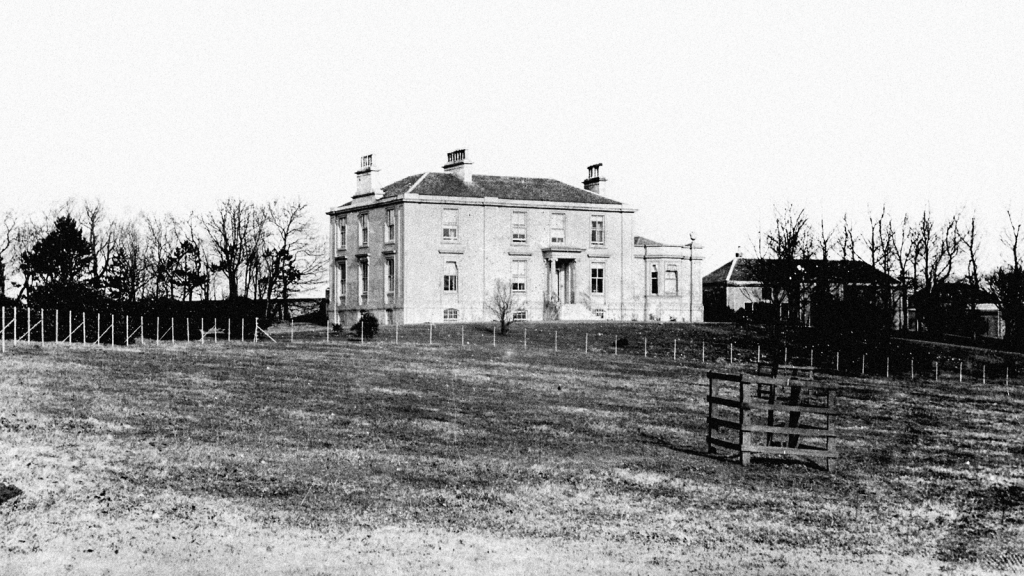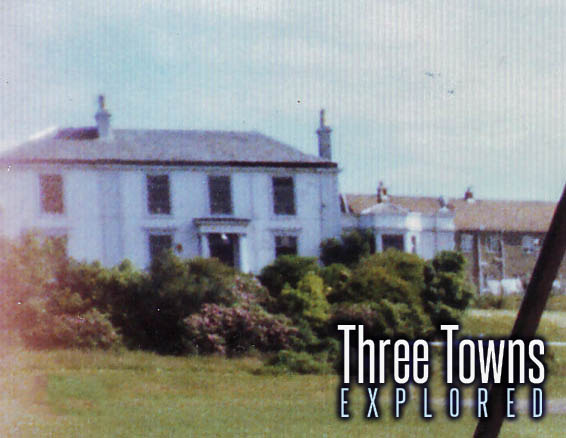Hayocks House
History
Hayocks House was a mansion to the north of Stevenston, built in the early 1800s on the lands of Hayocks Farm, owned by the Muir family for generations. The house was built just to the west of the existing farmhouse, and so would often be known as “West Hayocks”, with the farm becoming “East Hayocks”.
The earliest known owner of the house was John Muir, a merchant who lived with his elderly mother and 2 sisters at the time of the 1841 census. John would live in the house until his death in 1858, with the house being passed to his sister Janet Smith. She died a year later, and so the house and lands were put up for sale in early 1860.

Gavin Fullarton, owner of the adjacent Kerelaw Estate would buy the house and grounds, and straight away put the property out to let. In 1863 major alterations (designed by William Railton from Kilmarnock) were made to the house, adding extensions at both sides of the previously square building. Lt-Colonel Fredrick Neil Edmonstone would become the new tenant and the house became known as “Hayocks Lodge” and was used for shooting. He died in 1865 but Edmonstone’s widow would live on in the house until around 1877.
Gavin Fullarton died in 1876 and the lands fell to his trustees, with ownership of Hayocks eventually going to Captain Fullarton James, Chief Constable of Northumberland Police. Captain James was Fullarton’s great-nephew.
After the Edmonstone family various other tenants would continue to occupy Hayocks well into the 20th century, including Robert Knox, Edward Collins, William Scott, and George Grant. Grant was the tenant when on Sunday 18th December 1904 a fire broke out in the stables of the mansion, causing £500 worth of damage.
The house and grounds were put up for sale in 1918, along with the rest of the Kerelaw Estate. The estate was split at this point, with Hayocks being bought by Alexander McGregor, owner of Ardeer Foundry. McGregor renamed the house and grounds to Ardchoille. “Ard Choille” is gaelic for “High Wood”, and is the war cry of the McGregor clan.
The house was altered further in 1919, overseen by Largs architects Fryers & Penman.
McGregor died in 1928 however the Ardchoille name would remain. His wife Mary continued to live at Ardchoille House for several years.

In the 1940s Ardchoille House became Ardchoille Hotel, now owned by Samuel Boyd. Several applications for a licence to sell alcohol were rejected before finally being approved in October 1948. The hotel was a popular choice for wedding receptions and other social events.


From the mid 1960s the hotel was owned by Scottish & Newcastle Breweries Ltd, and had various licencees over the years.
The building became C listed on 26 February 1980 but it was demolished in early 1990. The land has remained derelict ever since.
Misc Info
The house had a large walled garden to the south east. Some of the wall itself still remains today.
The former paddock at the front of the hotel became the homeground of Ardeer Thistle Football Club between 1952 and 1973.
A cottage to the northwest, built some time before 1855, acted as a gatehouse and accommodation for a gardener. A second gatehouse would be built to the south some time between 1855 and 1895, and served as accommodation for the coach person.
In later days the northwest gatehouse would be known as Ardchoille Cottage, and the south gatehouse as Ardchoille Lodge. The latter was demolished around the 1970s, however Ardchoille Cottage still exists today.





